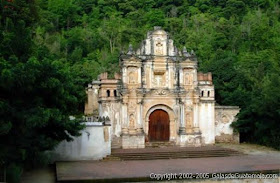Guatemala has gained an international reputation as having one of the highest concentrations of bill-fish, in particular Pacific Sailfish, all year round. At Puerto Quetzal, strong west-to-east currents come down from Mexico and meet with east-to-west currents from the coast of El Salvador. Together, these currents create an enormous, natural occurring eddy, rich in bait and pelagic fish making it a perfect spot to find sailfish, marlin, mahi-mahi (dorado) and many other species in tremendous numbers, and when I say tremendous, it is not an exaggeration and the best part is that the most important species are strictly protected and even the hooks are regulated.
With a year round daily catch and release rate averaging 15-20 sailfish, any fishing trip in Guatemala's Pacific Coast will become a lifetime experience. Scientists who have studied the large numbers of sailfish off the coast of Guatemala have concluded that this might be the largest breeding ground for Pacific Sailfish in the world.
Until now, Guatemala holds both the conventional and fly fishing records with most sailfish released in one day. Year after year Guatemala has consistent numbers of rises, bites and releases, all recorded and reported, backed up with testimonials from happy anglers that agree that Guatemala is certainly the Sailfish Capital of the World.
Any brief search over the Internet, in fishing magazines, cable or TV fishing shows and newspaper columns will provide figures that say pretty much the same thing: catches of over 25 sailfish per day are common, double and triple hookups are common, on average between 20 and 40 sailfish are caught and released per boat, per day and on extraordinary days, that number easily reaches the one hundred; fishing is good year round, etc. Local boat captains with conservative estimates affirm that between 1,000 and 1,400 sailfish are caught and released, per boat, per year, using conventional tackle and bait.
Guatemala: The saltwater fly-fishing destination at its best!




















